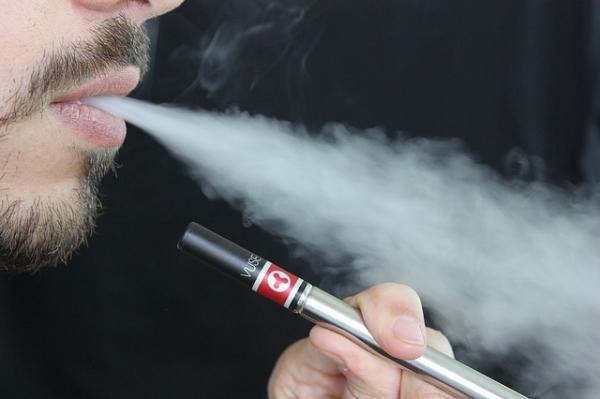Our Northern neighbor, Canada, has faced the same problem with the use of e-cigarettes among teenagers, banning their sale on a provincial basis between 2015 to 2017 and nationally in May 2018. Canada also has data of e-cigarette use from before these laws went into place, making for a natural cause and effect experiment, reported in JAMA Pediatrics.
The analysis looked at the differences in the use of e-cigarettes by people younger than 18 or 19 in provinces with and without the ban; the key assumption, motivation to use these vaping devices, was the same or similar across them all. The study made use of nationwide biennial surveys on tobacco, alcohol and drug use in Canadians over the age of 15. [1] It provided data of use, source of vaping products and harm perception. Since the bans and information began at varying times data encompassed varying periods but all roughly 2013 to 2017. The population at risk those individuals age 15 to 25.
E-cigarette use during the previous 30 days – the Primary Outcome
- Both before and after initiation of the ban, e-cigarette use increased. Prior to the ban, the increases across the provinces were essentially the same. In provinces without a ban, rates of use rose from 4.4% to 9.7%; the institution of the ban reduced the rate of increasing use, from 5.3% to 5.6%.
- The researchers calculated the ban reduced the increase by roughly 80%, with a peak effect at year one and a declining impact in year two.
The secondary outcomes
- Were e-cigarettes perceived as harmful? 2.6% more of these young adults in the banned provinces felt e-cigarettes were harmful compared to those in provinces without the ban. The calculated impact was about 14%
- Were e-cigarettes harm to obtain? The ban resulted in a 6.2% increase in the perception of difficulty in obtaining the contraband. The calculated impact was about 16%
- Where did the young adults obtain their e-cigarettes? The ban was effective in the sense that there were reduced purchases from “convenience or grocery stores and vape shops.” On-line purchases were unchanged. But there was a 17.3% increase, a calculated impact of roughly 30%, in young adults in banned area obtaining e-cigarettes from social sources – friends or relatives.
Bans have some impact, but those clever youths find away, lax sales at the corner store, online sales where no one knows your age or whether you are a dog, and of course, getting the older friend to make the purchase. All techniques we have employed in our youth around alcohol and conventional cigarettes.
The researchers suggest that a ban on flavors, one of the sources of its youth appeal, be put in place to reduce the appeal and subsequent demand. They try to split the baby as it were, leaving adult flavors, “such as alcohol and tobacco,” alone. To simplify the idea, ban the gateway to e-cigarette use, flavors; not the product.
But think back to your young adult years, sneaking cigarettes and drinks. Was the appeal the flavor or the social aspects, the rebellion against your parents, and the identification with your “tribe.”
[1] Canadian Tobacco, Alcohol, and Drugs Survey (CTAD), and Canadian Student Tobacco, Alcohol, and Drug Survey (CSTADS). General response rate of 70%.
Source: Association of Canada’s Provincial Bans on Electronic Cigarette Sales to Minors with Electronic Cigarette Use Among Youths JAMA Pediatrics DOI: 10.1001/jamapediatrics.2019.3912




